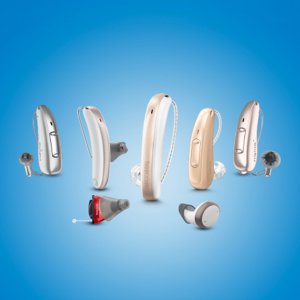
Earmolds
What are the eartips used for
Hearing aids these days are not only very small and light, but above all they are also powerful.
To use these devices to their maximum potential one can use earmolds – depending on the model and the degree of hearing loss
Table of Contents
- What is an earmold?
- Creating an individual impression of the ear
- Comfort
- Earmolds for musicians
What is an earmold?

Earmolds are the direct connection between the hearing aid and the ear. They are either connected to the sound tube of the behind-the-ear (BTE) hearing aids or firmly connected to the housing of in-the-ear (ITE) hearing aids and inserted directly into the ear. This ensures that the hearing aids are securely held within the auricle and can also promote the amplification effect of the hearing aid in the case of severe hearing loss.
If you have any further questions, our hearing care experts are available to help you find the perfect solution to your hearing requirements.
Hearing aid acoustician creates an individual impression of the ear

Hearing loss is as individual as a fingerprint and a person’s inner ear and ear canal are just as unique. In order for the earmold to be optimally held within the ear, it must correspond to a precisely fitting impression of the ear canal. This is why earmolds are individually made for each hearing aid wearer. The molding of the ear is the basis for the production of the earmold. It is handcrafted by the hearing care professional . With great care, he introduces a soft impression material into the part of the ear canal that is relevant for the otoplasty.
A special silicone material is used for this. It hardens within the ear canal without coming into direct contact with the sensitive inner skin of the ear. The process of taking an impression is completely painless and harmless if it is carried out correctly by a professionally trained hearing aid acoustician.
In this way, a detailed print can be made that will retain its shape afterwards.
In most cases, the actual earmold is then made in a specially equipped laboratory.
The importance of a comfortable fit
Depending on the nature and sensitivity of the ear canal, various plastics such as acrylic or silicone can be used to manufacture the earmolds. They can differ from one another in terms of their material properties and degree of hardness. The wearer will usually keep the earmold in the ear canal for several hours a day. They should therefore not perceive the object in his ear as an annoying foreign body. This can be achieved by using both hard and soft materials for the earmold.
If a hearing aid wearer is allergic to commonly used plastics, earmolds can also be glazed or gold-plated to prevent the plastics from coming into direct contact with the ear canal.
Allergen-free plastics such as Neutacryl, Thermotec may also be used. Accuracy of fit, skin tolerance, and high resilience are the most important properties that an earmold should have for successful and perfect use within the auricle.
Earmolds as headphones for musicians
Earmolds are not only used for hearing aids. A possible use is also individual hearing protection or special headphones, which are used both as hearing protection and for sound transmission. If earmolds are used as individual hearing protection, they are usually well ahead of conventional products such as earplugs in terms of comfort and protection. Professional musicians who require excellent speech and sound understanding, can use individual hearing protection.
Unlike simple insulation materials, earmolds do not falsify the sound and frequency response of music or speech and transmit the sound to the inner ear almost unchanged despite the noise restriction. These are often used by radio and television moderators, reporters and security forces who want to hear and understand better despite ambient noise.
The price for earmolds depends entirely on the area of application and the materials used.





